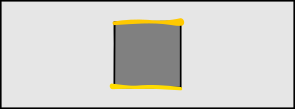Coverslip Compressorum
To observe living gastrotrichs in detail microscopically, it is necessary,
- to minimize the slice thickness, as this is the only way to ensure optimal optical conditions for objectives with high magnifications
- to keep the animals immobile
- to minimize the drying of the specimens to the extent that a comfortable observation time can be achieved
- prevent the penetration of immersion oil into the specimen
For this purpose I have developed the coverslip compressorum, which allows to achieve these conditions very easily and quickly.
First, as always, it is necessary to isolate the observation object with a thin pipette under the stereo microscope and apply it to a cleaned slide with as small a drop of water as possible. Care should be taken to ensure that the water droplet is small enough so that the layer of water under the coverslip to be applied does not reach the edges of the coverslip at the desired thickness. Some experience is required for this…

Coverglass compressorium: vaseline bars in yellow.
In this state, the gastrotrich trapped in the water droplet is still free to move and can be conveniently observed with weaker objectives. The small area of the water drop makes it easy to find the object.
Under microscope control, the layer thickness of the water can now be carefully reduced by pressing the coverslip edges just enough so that the gastrotrich is no longer movable and is gently pressed through the coverslip onto the slide. The two Vaseline edges provide sufficient resistance to manual pressure to reduce the coating thickness in a very controlled manner. The two opposing Vaseline edges ensure that
- drying of the preparation is greatly delayed, since evaporation of the water only occurs on the exposed coverslip edges without Vaseline and is therefore reduced.
- the adjusted layer thickness remains almost unchanged when the preparation dries out, since the water drop evaporates only at the edges and only its diameter changes.
- penetration of immersion oil is impossible at the sealed coverglass edges, and there is usually no contact with the sample water at the exposed ones.
- a “pull-through” of chemicals for dyeing etc. is possible without problems because of the open cover glass edges on the opposite side.
- a later manual reduction of the layer thickness until the object is flattened (e.g. for scale analysis is possible at any time in a controlled manner.
With a little experience, the creation of a cover glass compressorum is easy and possible within a few seconds.
I have been using this preparation method for high-resolution observations for years and would not want to do without it!